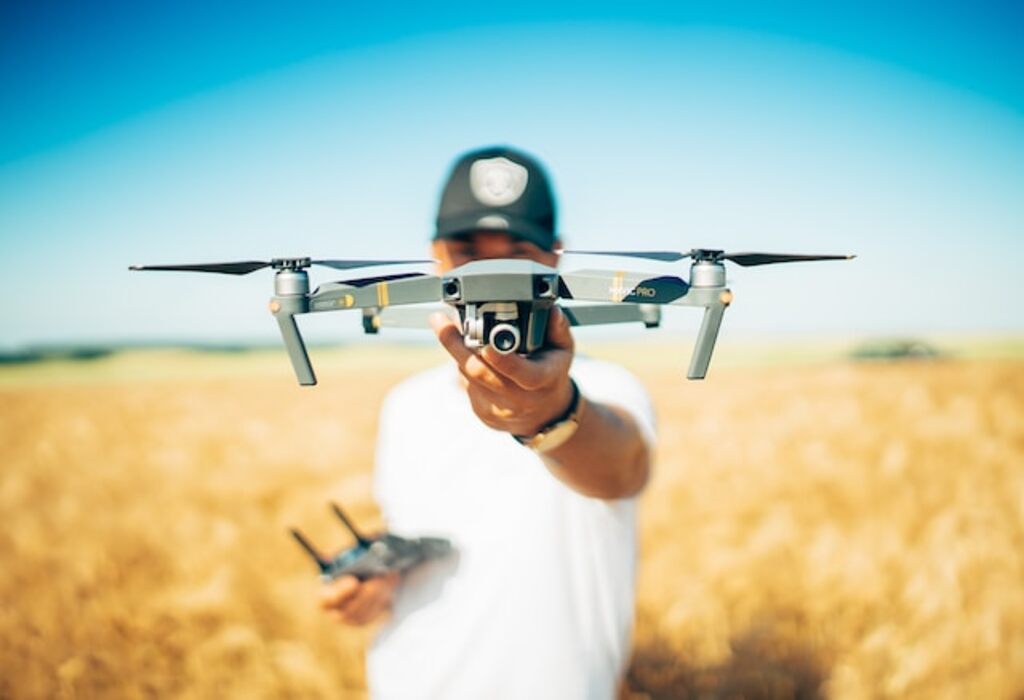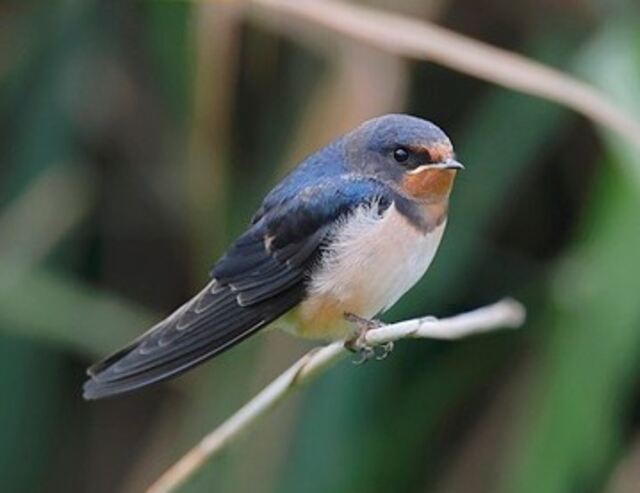Drones have become increasingly popular in recent years, with people using them for everything from aerial photography to package delivery.
However, there is one danger that many drone enthusiasts fail to consider: bird attacks. Yes, you heard me correctly – birds attacking drones.
It may sound like a ridiculous notion, but it’s a very real threat that has the potential to cause serious damage and even injury.
As someone who has spent countless hours piloting drones, I can tell you firsthand that bird attacks are no laughing matter.
In fact, they’re downright terrifying. So let’s dive into this topic and explore the risks associated with birds attacking drones.
Table of Contents
- 1 Do Birds Attack Drones?
- 2 The Increasing Popularity of Drones
- 3 The Risks Drones Face from Bird Attacks
- 4 The Nature of Birds
- 5 The Risks Posed by Bird Attacks on Drones
- 6 Real-Life Examples of Bird Attacks on Drones
- 7 How Drone Manufacturers are Responding to Bird Attacks
- 8 The Inevitability of Bird Attacks on Vulnerable Drones
- 9 Tips for Avoiding Bird Attacks on Drones
- 10 Conclusion
- 11 FAQs: Do BIrds Attack Drones?
- 11.1 Do birds attack drones during nesting season?
- 11.2 Are all bird species likely to attack drones?
- 11.3 How can I protect my drone from bird attacks?
- 11.4 What should I do if a bird attacks my drone?
- 11.5 Are there any legal restrictions regarding bird attacks on drones?
- 11.6 Can bird attacks cause damage to drones?
- 11.7 Are there any specific drone designs or features to deter bird attacks?
- 11.8 Do drones pose a threat to birds?
- 11.9 Can bird attacks on drones be dangerous for the birds?
- 11.10 How can I fly my drone responsibly around birds?
- 12 Author
Do Birds Attack Drones?
Yes, birds have been known to attack drones. Birds, particularly larger ones, may perceive drones as a threat to their territory or young ones, leading them to exhibit aggressive behavior.
When a drone enters its airspace, birds may engage in defensive actions such as swooping, pecking, or even physically striking the drone in an attempt to drive it away.
It’s important to note that not all birds will attack drones, and the likelihood of an attack may depend on various factors such as the species of the bird, the drone’s size and appearance, the bird’s nesting season, and the drone’s proximity to the bird’s habitat.
Some birds are more territorial or prone to aggression than others, so their reactions can vary.
To avoid potential conflicts with birds, drone operators are advised to fly responsibly and respect wildlife.
This includes maintaining a safe distance from bird nesting areas, avoiding flight patterns that may disturb or provoke birds, and being aware of local regulations or restrictions regarding drone operation in areas with wildlife populations.
The Increasing Popularity of Drones
There’s no denying that drones have taken the world by storm. From hobbyists to professionals, everyone seems to be jumping on the drone bandwagon these days.
And why wouldn’t they? Drones offer a unique perspective and an unparalleled level of convenience.
They can capture stunning aerial footage for filmmakers and photographers, deliver packages straight to your doorstep, and even provide valuable insights for businesses in a wide range of industries.
However, with this increasing popularity comes a new set of challenges – namely, the threat of birds attacking drones.
The Risks Drones Face from Bird Attacks
When most people think about the risks associated with flying a drone, they probably imagine crashing into a tree or losing control of the aircraft.
But there’s another danger that is often overlooked: birds. Birds have been known to attack all kinds of flying objects – from airplanes to helicopters – but drones are particularly vulnerable due to their small size and fragile construction.
A single peck from a bird can easily take down a drone mid-flight, causing it to crash and potentially injure someone on the ground.
Furthermore, bird attacks can also cause serious damage to your expensive equipment – meaning you’ll have to shell out even more money for repairs or a replacement drone.
In short, the increasing popularity of drones has led to a new set of risks that we must all be aware of. And when it comes to birds attacking drones, it’s not a matter of if – but rather, when.
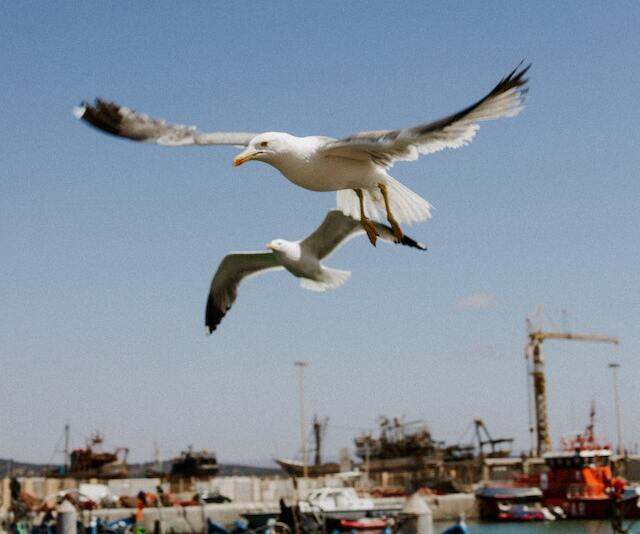
The Nature of Birds
Birds are Predators
Let’s face it; birds are predators by nature. They hunt, kill and consume their prey to survive.
This predatory instinct is not limited to their natural competitors but extends to anything they perceive as a threat.
Whether it’s an animal or an object that poses a danger to them, they will attack it relentlessly until they establish dominance over the situation.
Their eyesight, hunting skills, and speed make them formidable opponents in any battle for survival. To underestimate this aspect of birds is simply foolish.
Humans have been at war with birds for centuries and yet continue to lose ground. It’s not because we lack technology or intelligence, but simply because the predatory nature of these creatures is unmatched.
Perception of Drones as Threats
With the increase in popularity of drones, it was only a matter of time before birds started attacking them too. These flying machines pose an unknown threat that birds haven’t encountered before in their natural habitats.
This factor alone is enough for them to perceive drones as a potential danger. Birds rely on visual cues to identify and classify their prey or competitors in the environment around them.
Drones look like nothing they have ever seen before, so it’s only natural for them to become defensive when one enters their territory.
Moreover, since drones can operate at altitudes higher than most birds can fly naturally and make sounds similar to that of potential predators (such as eagles), these machines trigger instincts within these animals that tell them something unusual is happening around them.
Conclusion
While many people may argue that birds attacking drones are merely curious or playful animals interested in testing out new toys – nothing could be further from the truth!
These creatures are hard-wired by nature to detect threats and take action against anything which might harm themselves, their nest, or their offspring.
They have been doing this for millions of years and aren’t about to stop now just because of some fancy technological gadget.
So, if you’re planning on flying your drone in an area where birds are present, be prepared to face the consequences!
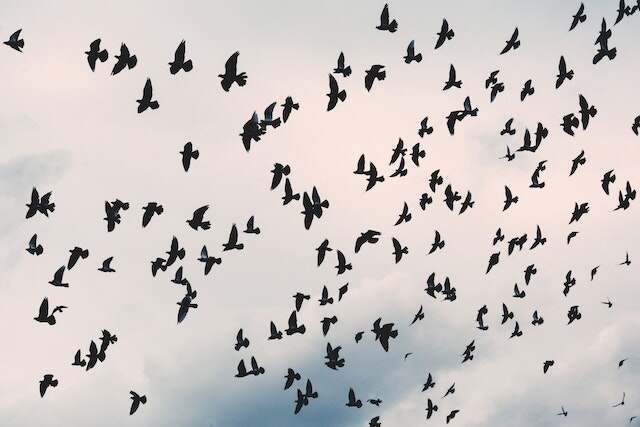
The Risks Posed by Bird Attacks on Drones
When The Hunter Becomes The Hunted: How Bird Attacks Can Damage or Destroy Drones
As drone technology becomes more prevalent, so does the issue of bird attacks. It’s no secret that certain bird species can be aggressive and territorial, and they’re not afraid to attack anything that poses a threat to their territory or food source.
Unfortunately for drone enthusiasts, drones fit squarely in that category. Birds are known to target drones mid-flight, pecking at them and causing them to crash.
What many people don’t realize is just how much damage these attacks can cause.
Even a small bird can cause significant damage to a drone’s propellers or frame, rendering it useless and in need of repair or replacement.
This can be especially frustrating for hobbyists who have invested significant time and money into building customized drones that are now destroyed thanks to a bird’s aggression.
Danger From Above: Highlighting the Potential Danger Posed by Falling Drones
The risks posed by bird attacks on drones extend far beyond merely damaging the drone itself. When a drone is attacked mid-flight, it often falls out of the sky uncontrollably – potentially into crowded areas below.
The potential danger posed by falling drones cannot be understated; even small consumer-grade drones can weigh several pounds and fall from considerable heights.
Imagine being hit by one of these falling machines while walking down the street – it could lead to serious injury or worse.
Furthermore, if an event like this were to occur in crowded areas such as parks or sports stadiums where drones have become increasingly popular, the potential for mass chaos is very real indeed.
What You Don’t Know Can Hurt You: Acknowledging The Severity Of Birds Attacking Drones
It’s easy for some people to dismiss birds attacking drones as a mere nuisance or a minor inconvenience. However, the reality is that these incidents are happening more and more frequently, and their potential impact cannot be ignored.
The risks posed by bird attacks on drones go beyond just the cost of repairs or replacements – they can lead to injury, property damage, and even legal consequences.
It’s time for us all to acknowledge the severity of this issue and take action accordingly. Drone enthusiasts should be aware of the potential risks posed by bird attacks and take steps to protect themselves and others from harm.
Bird experts should work together with drone manufacturers to develop solutions that minimize the risk of these types of incidents occurring in the first place.
Only then can we ensure that both birds and drones can coexist peacefully in our airspace.
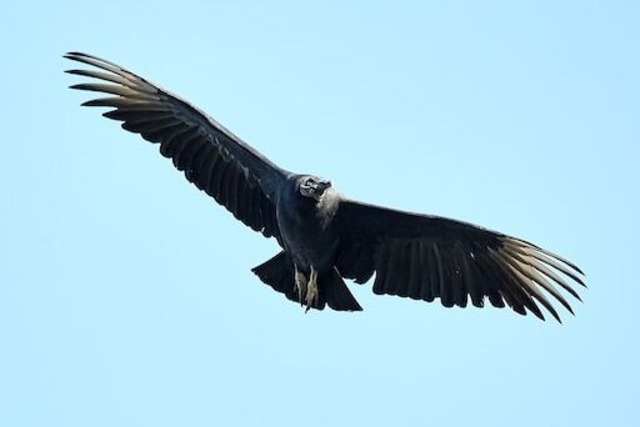
Real-Life Examples of Bird Attacks on Drones
The Horror is Real
It is not uncommon to see birds attacking drones these days. In fact, a quick search on YouTube will bring up countless videos of birds swooping in and taking out drones mid-flight. These attacks are not just limited to small hobbyist drones either.
Even larger commercial drones, which can cost tens of thousands of dollars, are vulnerable to bird attacks.
One particularly gruesome example occurred in 2016 when a wedge-tailed eagle attacked a drone operated by the Australian government’s environmental agency.
The bird managed to take down the drone in just a few seconds, causing significant damage and rendering it unusable.
It was not an isolated incident either; reports suggest that wedge-tailed eagles have attacked numerous other drones flying in their territory.
Unleashing the Fury
Birds are natural predators, and they will attack anything that they perceive as a threat to their territory or food source. Unfortunately for drone pilots, this includes our beloved flying machines.
From seagulls diving into the propellers of DJI Phantoms to hawks swooping down on Mavic Airs, there seems to be no end to the fury that some birds unleash upon unsuspecting drones.
And it’s not just birds of prey that pose a threat either.
In 2015, a group of angry swans took exception to a drone flying too close to their nest and proceeded to attack it with gusto.
The resulting footage shows the swans aggressively pecking at the drone before finally knocking it out of the air.
The Tip of the Iceberg
These real-life examples are just the tip of the iceberg when it comes to birds attacking drones. There are countless other incidents that go unreported or undocumented every day around the world.
And with more and more drones taking to the skies each year, it’s only a matter of time before we see even more spectacular bird attacks.
So what can drone pilots do to protect themselves and their machines from these feathered foes? The answer lies in understanding the nature of birds and taking steps to avoid provoking them.
But even with the best precautions, there is always a risk that a bird will launch an unexpected attack.
The only thing we can do is hope that our drones come out unscathed and that we don’t end up on the wrong side of a bird’s wrath.
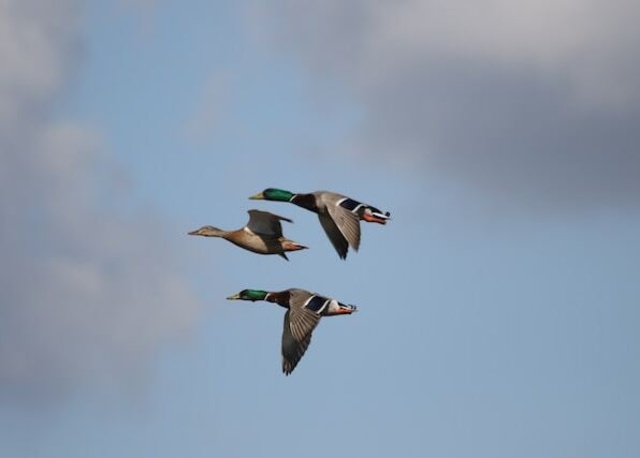
How Drone Manufacturers are Responding to Bird Attacks
Protecting the Precious Drones:
Drones have become an essential tool for many industries, such as filmmaking and surveying. Thus, it has become necessary to protect them from bird attacks that can cause severe damage or even result in the loss of a drone.
To combat this problem, drone manufacturers have started developing new technologies that can prevent bird attacks.
One of the most common methods is to install obstacle avoidance systems which are sensors that detect obstacles in the drone’s path and redirect it elsewhere.
While this may sound like a perfect solution, it is not 100% effective in preventing bird attacks. Birds are intelligent creatures and can learn how to avoid obstacle avoidance systems pretty quickly.
Tougher materials for tougher birds:
Another approach adopted by some manufacturers is to develop drones with tougher materials that can withstand an attack from birds.
Some drones come with carbon fiber finishing on their arms and propellers, providing extra protection against scratches and dents caused by bird claws.
While these efforts are commendable, I am afraid they do not go far enough.
It’s true that carbon fiber can provide excellent protection against minor scratches and dents caused by birds’ talons.
Still, if a bird decides to take down your drone with force, even the most durable materials will fall short.
The Inevitability of Bird Attacks on Vulnerable Drones
Birds Will Always Find A Way:
Despite the best efforts of drone manufacturers, there is no guaranteed way to protect drones from bird attacks because birds will always find a way around obstacles or tough materials.
Birds are highly intelligent creatures with excellent vision who rely on their instincts when hunting prey or protecting their territory.
They perceive drones as threats to their food source or shelter; hence they will do everything in their power to take them down. It’s also worth noting that drones come in different shapes and sizes.
Some are small and agile, while others are bulky and slow. It’s challenging to develop a one-size-fits-all solution for such a varied problem.
Accepting the Inevitable:
While it is essential to take measures to protect against bird attacks on drones, it is also essential to accept that these attacks are inevitable.
Drone operators should be aware of the risks associated with flying drones near birds’ habitats or nesting sites. They should also avoid flying drones too close to birds or other wildlife, as this can trigger an attack.
Ultimately, drone manufacturers must focus on developing more reliable technology that can prevent bird attacks and minimize damage when they occur.
Until then, drone owners must accept that birds will always pose a threat and be prepared for any eventuality.
Tips for Avoiding Bird Attacks on Drones
Don’t Fly Near Birds of Prey
The first and most obvious tip for avoiding bird attacks on drones is to avoid flying your drone near birds of prey.
These birds, such as eagles, hawks, and falcons, are natural predators with razor-sharp talons that can easily destroy a drone.
If you must fly your drone in an area where birds of prey are present, be sure to keep a safe distance and stay vigilant for any signs of aggression.
Keep Your Drone Low and Slow
Another way to reduce the risk of bird attacks on your drone is to keep it low and slow. Flying your drone at high altitudes or at high speeds can attract the attention of birds and make them more likely to attack.
By keeping your drone closer to the ground and flying at a slower speed, you can minimize the chance of a bird mistaking it for prey.
Use Noise or Visual Deterrents
If you’re flying your drone in an area with a lot of birds or want extra protection against bird attacks, you may want to consider using noise or visual deterrents.
Some drones come equipped with speakers that emit loud noises that can scare off birds, while others use flashing lights or bright colors that make them more visible and less attractive as prey.
Conclusion
When it comes down to it, avoiding bird attacks on drones is all about using common sense and taking precautions.
By understanding the nature of birds and their instincts towards potential threats like drones, you can make informed decisions about when and where to fly your device.
And by following tips like avoiding high-risk areas, keeping your drone low and slow, and using deterrents when necessary, you can greatly reduce the risk of damage from bird attacks.
Drones have revolutionized the way we capture images and videos, but it’s important to remember that they are still vulnerable to the elements, including birds.
However, with a little bit of foresight and care, you can keep your drone safe and enjoy all the amazing footage it can capture from above.

FAQs: Do BIrds Attack Drones?
Do birds attack drones during nesting season?
Yes, birds can become more territorial and protective during nesting season, increasing the likelihood of them attacking drones that enter their airspace.
Are all bird species likely to attack drones?
No, not all bird species will necessarily attack drones. Some species are more prone to aggression and territorial behavior, while others may not perceive drones as a threat.
How can I protect my drone from bird attacks?
You can protect your drone from bird attacks by avoiding flying near bird nesting areas, maintaining a safe distance from birds, and respecting their habitats. Additionally, using propeller guards and flying at higher altitudes can reduce the risk of bird collisions.
What should I do if a bird attacks my drone?
If a bird attacks your drone, it’s recommended to land the drone safely and avoid any confrontation or escalation. Pilots should prioritize the safety of the drone and the well-being of the birds.
Are there any legal restrictions regarding bird attacks on drones?
In some regions, there may be regulations or guidelines in place to protect wildlife, including birds, from drone disturbances. It’s important to familiarize yourself with local laws and regulations regarding drone operation near wildlife.
Can bird attacks cause damage to drones?
Yes, bird attacks can potentially cause damage to drones, particularly if the bird collides with the drone’s propellers or body. It’s crucial to assess any damage and ensure the drone is in proper working condition before flying again.
Are there any specific drone designs or features to deter bird attacks?
While there are no specific drone designs or features solely aimed at deterring bird attacks, using drones with quieter operation or adding visual deterrents, such as predator-like markings, may help reduce the likelihood of bird attacks.
Do drones pose a threat to birds?
Drones can potentially disrupt bird behavior and cause stress or disturbance, particularly if flown too close to nesting areas or breeding grounds. It is important to operate drones responsibly to minimize any negative impact on bird populations.
Can bird attacks on drones be dangerous for the birds?
Bird attacks on drones can pose a risk to both the drone and the birds. Collisions with drones may harm or injure birds, and it’s important to prioritize their safety and well-being when operating drones in bird-populated areas.
How can I fly my drone responsibly around birds?
To fly your drone responsibly around birds, maintain a safe distance, avoid flying near nesting areas, and comply with local regulations. Being aware of bird behavior and adapting your flight patterns accordingly can help minimize disturbances and potential conflicts.

